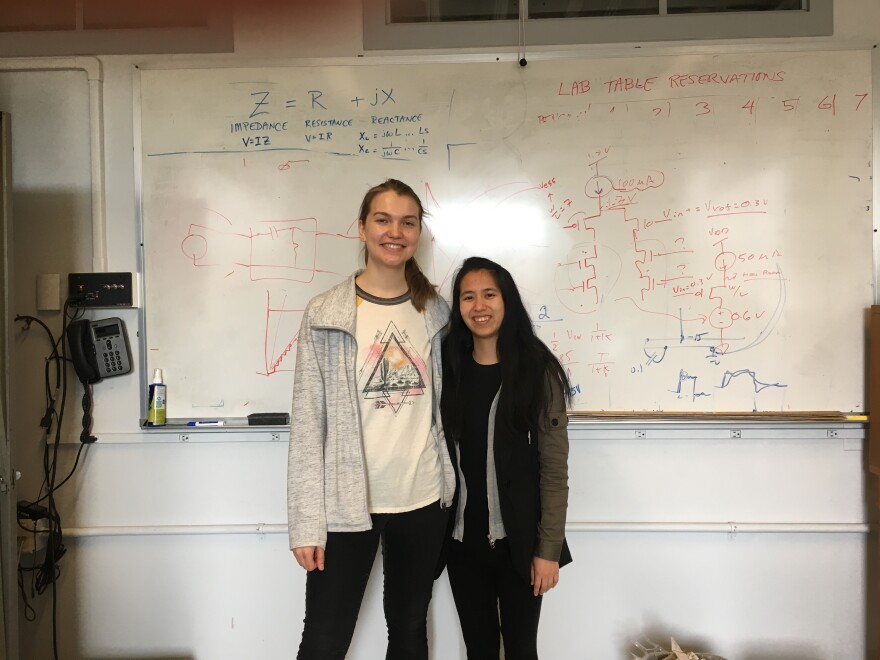A group of Dartmouth engineering students recently won a challenge from NASA to design a greenhouse for Mars.
The challenge was laid out by NASA: Create a system to feed four astronauts on a 600-day mission to Mars.
Of the five teams from around the country that made it to the final stage of the BIG Ideas competition, the team of 8 students from Dartmouth won for their greenhouse called DEMETER.
DEMETER stands for Deployable Enclosed Martian Environment for Technology, Eating, and Recreation.
“We wanted to use the acronym because Demeter is the Greek goddess of agriculture, harvest, growth and nourishment and we thought she would be a food figure to represent our greenhouse and what we want it to do,” fifth year Dartmouth engineering student and team co-manager Zoe Rivas told me.
Rivas says it’s important to research how to send a greenhouse to Mars because humans will go there some day. Scientists estimate that day could be as soon as in the 2030s. And when they do get to Mars, it’s preferable for the astronauts to eat fresh food.
“The reason a greenhouse is important as opposed to sending a bunch of pre-packaged food is that eating fresh food has a lot of physical and mental health benefits for crew members,” Rivas says.
Rivas and her teammates consulted nutritionists and USDA data to select plants that would give the astronauts enough calories and vital nutrients like fats, carbohydrates, and proteins.

Another teammate Grace Genszler says they settled on eight foods for the astronauts to grow. Their diet would consist of kale soy beans potato sweet potato strawberries, broccoli, wheat, and chufa. Chufa is a plant that looks like a green grass above ground. From its roots, it grows tiny white tubers that are high in fat.
Rivas bought some chufa online for the team to taste. “They're kind of wrinkly like little raisins,” she says. “Yeah, it’s pretty nutty. A little coconutty also,” Genszler adds.
How to actually grow the eight different crops was the next challenge. The team built DEMETER digitally, using computer architecture software. But for ideas, they visited greenhouses near Hanover. Then, back at the lab, they constructed their own physical prototypes.
In a workspace at the Thayer School of Engineering, Rivas and Genszler show me the hydroponic system they fashioned. Genszler lifts up an aluminum covering to show me a growing tray surrounded by white PVC pipes. The whole system sits in a kiddie pool to protect the other projects in the room from the water. Fluorescent lighting shines on a few plants, and among the flowers and leaves, I spot two strawberries.
“We can tell you hydroponic strawberries taste good and that’s good for the astronauts,” Rivas says.
Aside from growing food, astronauts would also be able to exercise in DEMETER. The students included a space in between the greenhouse and the radiation layer just wide enough for running. 50 laps around would make a mile, they tell me.
Additionally, radiation levels are very high on Mars, so the team designed a special outer layer for the greenhouse. The protective layer would be filled with ice and the water for that, and for the plants inside, would be sourced directly from Mars.
Most of the other components for the greenhouse would come from Earth. But Rivas says another team in the competition had a plan to use Martian soil.
“When we initially looked at using Martian soil, we thought it wasn’t an option because there are poisonous perchlorates in the soil,” Rivas tells me. “But they were able to look at that and find a way to extract those out and then add in the nutrients they would need. So that was pretty interesting to see how other teams solved problems like that.”
NASA says it will look at all of the teams’ ideas as it develops its design for a real greenhouse on MARS. In the meantime, one DEMETER team member will continue with similar research as an intern for NASA this summer.







